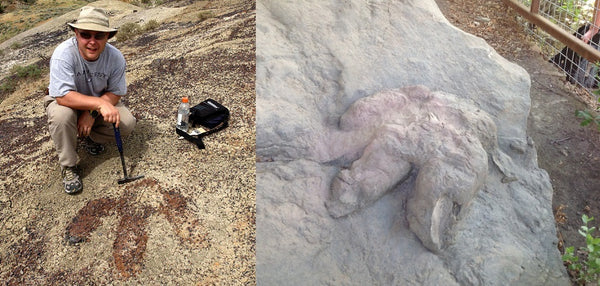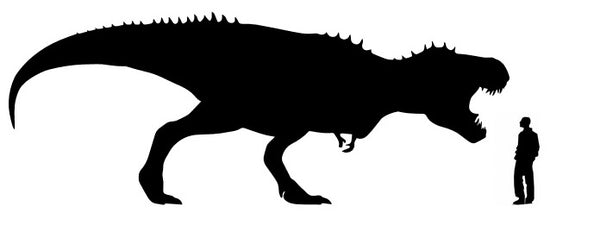The Earth shook beneath its feet and it stalked stealthily its preys near the watering holes. There, at the soft wetlands were marked its tridactyl footprints. There are not many big ichnites of the mega predators of those times, and its tracks are shy.
Some of these footprints have been attributed to the Tyrannosaurus rex, due both to their size and their age. However, a new footprint discovered in Bolivia puts on the Cretaceous map a new titan 80 million years old (footprint picture in the image at the top). It lived before the Tyrannosaurus rex and it was bigger. We know little more about the dinosaur who put the foot on the mud, which has now become stone, as it's impossible to assign the footprint to a specific dinosaur, but its length is estimated at 15 meters approximately.

In the year 2007 a footprint was found at the Hell Creek Formation, Montana, with an incredible length of 72 cm. However, a bigger footprint had been founded previously in New Mexico, with 83 cm. This footprint was to date the biggest in the world. Both were from the Cretaceous and scientists think it may be of a Tyrannosaurus rex.
But these two footprints seem small compared to the ichnite from Sucre, Bolivia, which has a length of 120 cm. It amazed its discoverers and whoever thinks about the size of such carnivorous colossus.

No doubt: 80 millions of years ago a "titan" stepped into the mud in Sucre, the question is if its bones will be buried as well, waiting to be discovered. In the meanwhile, you can also have a look at our theropods collection.
Sources:
- www.upsocl.com
- BBC
- CNN
- El País
- El Mundo
Germán Z. López
This post can also be read in Spanish at our partner blog Made in Pangea.





























































